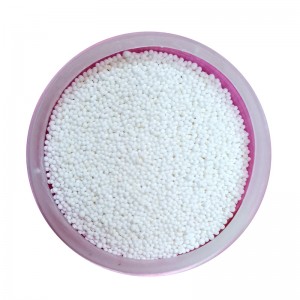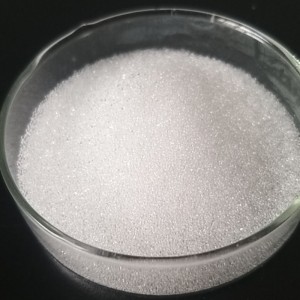
GA211 Strong-Base Type II (Gel) Anion Exchange Resin
GA211 Strong-Base Type II (Gel) Anion Exchange Resin
1.Typical physical & Chemical characteristics
| Polymer Matrix Structure______________ | Styrene Crosslinked with DVB |
| Physical Form and Appearance__________ | Clear spherical beads |
| Whole Bead Count___________________ | 95% min. |
| Functional Groups____________________ | Quaternary amine |
| Ionic Form ,as shipped________________ | CL |
| Total Exchange Capacity, CL- form, wet, volumetric_______________ | 1.2 eq/l min. |
| Moisture Retention, CL- form___________ | 42-48% |
| Particle Size Range___________________ | 0.85-0.95 |
| Swelling CL-→ OH-__________________ | 25% max |
| Shipping Weight (approx.)_____________ | 710-730 g/l |
| Specific Gravity, moist CL- Form_______ | 1.09 |
| PH Range, Stability___________________ | 0 – 14 |
2.Suggested Operating Condition
| Maximum Temperature OH- Form_________________CL- Form________________ | 40°C (105oF) max.60°C (176oF) max. |
| Minimum Bed Depth_________________ | 0.6m(24inches) |
| Backwash Rate______________________ | 50 to 75% Bed Expansion |
| Regenerant Concentration | 2 – 6% |
| Regenerant Flow Rate ________________ | 2 to 8 BV/h (0.25 to 1.0gpm/cu/ft.) |
| Regenerant Contact Time _____________ | At least 60 minutes |
| Regenerant Level ____________________ | 112 -300g/L (4 to 10 pounds/ cu/ft.) |
| Displacement Rinse Rate ______________ | Same as Regenerant Flow Rate |
| Displacement Rinse Volume ___________ | 10 to 15 gallons/cu.ft. |
| Fast Rinse Rate ______________________ | Same as Service Flow Rate |
| Fast Rinse Volume ___________________ | 35 to 60 gallons/cu.ft. |
| Service Flow Rate ___________________ | 2 to 4 gpm/cu/ft. |
3.Hydraulic Properties
(1)Pressure Drop
Different temperatures (40°F, 60°F, 80°F, 100°F) correspond to different curves. The general rule is that the higher the flow rate, the greater the pressure drop; at the same flow rate, the lower the temperature, the greater the pressure drop. This is because when the temperature is low, the fluid viscosity is relatively large, the flow resistance is large, and the pressure drop increases. In the application of strong base anion exchange resin, the pressure loss of the system at different temperatures and flow rates can be estimated based on this to avoid affecting the operation of the equipment due to excessive pressure drop.
(2)Backwash Expansion
Different temperatures (60°F, 80°F, 90°F) correspond to different curves. As the flow rate increases, the pressure drop increases; at the same flow rate, the higher the temperature, the greater the pressure drop. In the backwash operation of strong base anion exchange resin, this helps to determine the appropriate backwash flow rate. The appropriate backwash flow rate can ensure that the resin layer expands effectively, loosens the resin bed to remove impurities, and does not cause damage to the equipment due to excessive pressure drop. At the same time, the temperature factor must also be considered to optimize the backwash process.








